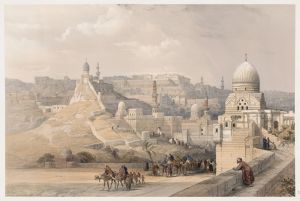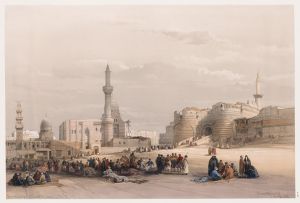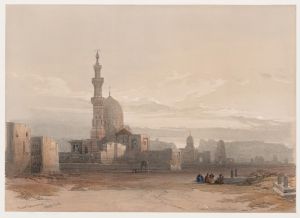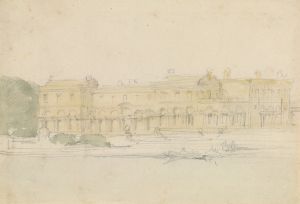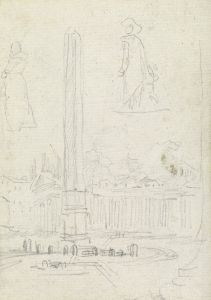
The Nileometer, Island of Rhoda.
A hand-painted replica of David Roberts’s masterpiece The Nileometer, Island of Rhoda., meticulously crafted by professional artists to capture the true essence of the original. Each piece is created with museum-quality canvas and rare mineral pigments, carefully painted by experienced artists with delicate brushstrokes and rich, layered colors to perfectly recreate the texture of the original artwork. Unlike machine-printed reproductions, this hand-painted version brings the painting to life, infused with the artist’s emotions and skill in every stroke. Whether for personal collection or home decoration, it instantly elevates the artistic atmosphere of any space.
David Roberts' painting The Nileometer, Island of Rhoda is a 19th-century artwork that depicts the Nileometer, an ancient structure located on Rhoda Island in Cairo, Egypt. The Nileometer was a critical tool used to measure the water levels of the Nile River, which played a vital role in the agricultural and economic life of ancient Egypt. By monitoring the river's annual flooding, the Nileometer helped predict crop yields and determine taxation rates based on the expected agricultural output.
David Roberts (1796–1864) was a Scottish painter renowned for his detailed and romanticized depictions of architectural and historical landmarks, particularly in the Middle East and North Africa. His works were based on sketches and studies he made during his travels, which he later transformed into finished paintings and lithographs. Roberts visited Egypt in 1838–1839 as part of a broader journey through the region, during which he documented numerous sites of historical and cultural significance. His works were widely celebrated for their accuracy and artistic quality, contributing to the growing European fascination with Egyptology during the 19th century.
The Nileometer depicted in Roberts' painting was constructed in the 9th century CE during the Abbasid Caliphate, under the rule of Caliph al-Mutawakkil. It consists of a stone-lined well connected to the Nile by a series of tunnels, with a central column marked with measurements to record the water level. The structure was designed to provide precise readings of the river's height, which were essential for managing irrigation and predicting the impact of the annual inundation. The Nileometer on Rhoda Island is one of the best-preserved examples of such devices and remains an important historical site.
Roberts' painting captures the architectural details of the Nileometer and its surroundings, including the lush vegetation and the tranquil waters of the Nile. His work reflects the 19th-century European interest in documenting and romanticizing the landscapes and monuments of the Middle East. The painting is part of Roberts' larger body of work, which includes numerous scenes from Egypt, the Holy Land, and other regions he visited during his travels.
The exact location of the original painting or its current ownership is not specified in available records. However, many of Roberts' works were reproduced as lithographs and widely distributed, ensuring their enduring influence and popularity.





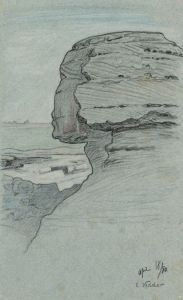

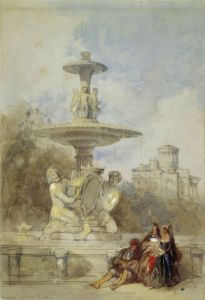

![Karnac [Karnak]. Nov. 29th, 1838](/imgs/217503/s/david-roberts-karnac-karnak-nov-29th-1838-5a10b435.jpg)
![Lateral view of the temple called the Typhonæum, at Dendera [Dandara].](/imgs/217507/s/david-roberts-lateral-view-of-the-temple-called-the-typhonaeum-at-dendera-dandara-b378b9d7.jpg)
![Temple of Dandour [Dendûr], Nubia.](/imgs/217545/s/david-roberts-temple-of-dandour-dendur-nubia-8921547f.jpg)
![Temple of Wady Saboua [Wadi al-Sabua], Nubia.](/imgs/217551/s/david-roberts-temple-of-wady-saboua-wadi-alsabua-nubia-52e62db.jpg)
